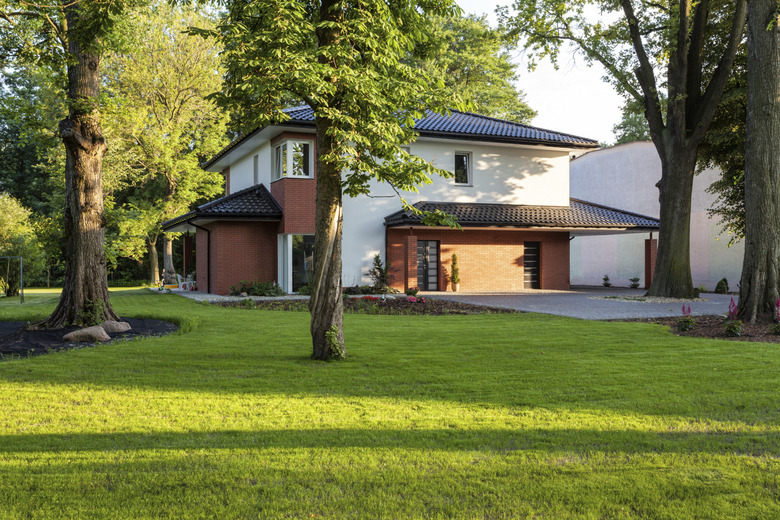How To Stop Tree Suckers From Growing
Suckers shoot up from roots throughout the yard and around the plant base in both living and cut trees and shrubs. The approach to stop sucker growth depends on whether the tree is alive or dead. Suckers are particularly common in ornamental fruit trees grown on grafted rootstock and in trees such as black locust (Robinia pseudoacacia), grown in U.S. Department of Agriculture plant hardiness zones 3 through 9.
Hand Removal
Hand Removal
Hand removal is the easiest way to stop suckers from growing, but it also takes the most patience. Suckers grow from tiny buds around the trunk base that will resprout repeatedly if they are not removed. Root suckers are known to pop up at any point along the root system. It's not uncommon to find root suckers on the other side of a yard, far away from the actual tree trunk. Remove suckers as close to the point of origin as possible so the bud is also removed. This might require digging around the base of the tree to uncover the point of origin, or digging down to the root in the middle of the yard. If the suckers are young, you can simply pull them off with your hands and the buds usually peel off along with them. Remove any new suckers as soon as they sprout and you will eventually slow their growth, although you might not be able to stop them completely.
Mulching
Mulching
A thick layer of mulch around the plant base helps block out sunlight that encourages sucker growth. Cover the area well after pulling suckers off the tree base to help suppress new growth. Trees with shallow roots tend to sucker heavily, whether shallow rooting is part of the natural growth habit or a result of dense soil that is difficult to penetrate. These trees benefit from a ring of mulch under the canopy. Sucker growth around cut trees can further be discouraged by covering the area with a layer of black plastic before adding the mulch. The plastic blocks sunlight and water from feeding the roots and can eventually stop suckers from growing.
Plant Growth Regulators
Plant Growth Regulators
Plant growth regulator products can stop sucker growth for up to three months. Professional landscapers and arborists can use products containing the chemical maleic hydrazide, but homeowners are limited to products containing naphthaleneacetate (NAA). These products are typically available in ready-to-use spray bottles, but concentrated products need to be mixed to a 1 percent solution. For example, a concentrate with 40 percent naphthaleneacetate should be mixed at a rate of roughly 1 ounce of growth regulator per gallon of water. Spray the open wound generously with the growth regulator immediately after pulling off or cutting the suckers. This treatment is most effective on suckers removed in spring and summer.
Herbicide
Herbicide
Herbicide should not be used to treat suckers on living trees if you want to keep the tree in your landscape. Herbicides with the active chemicals triclopyr and glyphosate work well to stop sucker growth on trees and shrubs that have been cut down but continue to produce new shoots. A 2 to 3 percent solution of these chemicals works best and you can usually find them in ready-to-use spray bottles. A common glyphosate product with 41 percent glyphosate content should be mixed at a rate of 2 2/3 ounces to make a 2 percent solution. You can spray the herbicide directly on the foliage and stems of suckers and wait about 10 days for them to die. If suckers prove particularly aggressive, try cutting the tips and submerging them overnight in a jug of herbicide solution so they drink as much into the roots as possible.
References
- Royal Horticultural Society: Trees and Shrubs: Removing Suckers and Seedlings
- Pittsburgh Post-Gazette: Pruning, regulators help control shoots
- National Gardening Association: Root Suckers on Ornamental Pear Tree
- Chicago Tribune: Long-gone locust still sending out sprouts
- Today's Homeowner with Danny Lipford: How to Control Lilac Sucker Growth
- Southern Living: Bradford Pears Must Die
